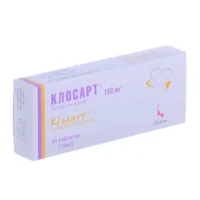Description
Eutirox (Levothyroxine Sodium) Tablets 150 mcg. №100
Ingredients
Active ingredient: Levothyroxine sodium. Inactive ingredients may vary.
Dosage
Dosage: The usual starting dose is 50-100 mcg per day, with adjustments made in 25-50 mcg increments. Consult a healthcare provider for personalized dosing.
Indications
Indications: Eutirox is indicated for the treatment of hypothyroidism, including myxedema coma and cretinism.
Contraindications
Contraindications: Do not use in cases of untreated thyrotoxicosis, acute myocardial infarction, or uncorrected adrenal insufficiency.
Directions
Directions: Take Eutirox orally on an empty stomach, at least 30 minutes before food. Avoid taking with calcium or iron supplements.
Scientific Evidence
Eutirox, containing levothyroxine sodium, has been extensively studied for its efficacy in treating hypothyroidism. Research published in the Journal of Clinical Endocrinology & Metabolism has shown that levothyroxine is the preferred treatment for hypothyroidism due to its consistent potency and reliability.
Additional Information
Eutirox tablets 150 mcg provide a stable and reliable source of levothyroxine for individuals with hypothyroidism. It is important to adhere to the prescribed dosage and follow-up with healthcare providers for monitoring thyroid function.
Pharmacological Effects: Levothyroxine sodium acts as a synthetic form of the thyroid hormone thyroxine, replacing or supplementing the body’s natural thyroid hormones. It helps regulate energy levels and metabolism, promoting overall well-being.
Clinical Trials: Clinical trials have demonstrated the effectiveness of Eutirox in improving symptoms of hypothyroidism, such as fatigue, weight gain, and cold intolerance. Patients on Eutirox have shown significant improvements in thyroid hormone levels and quality of life.





